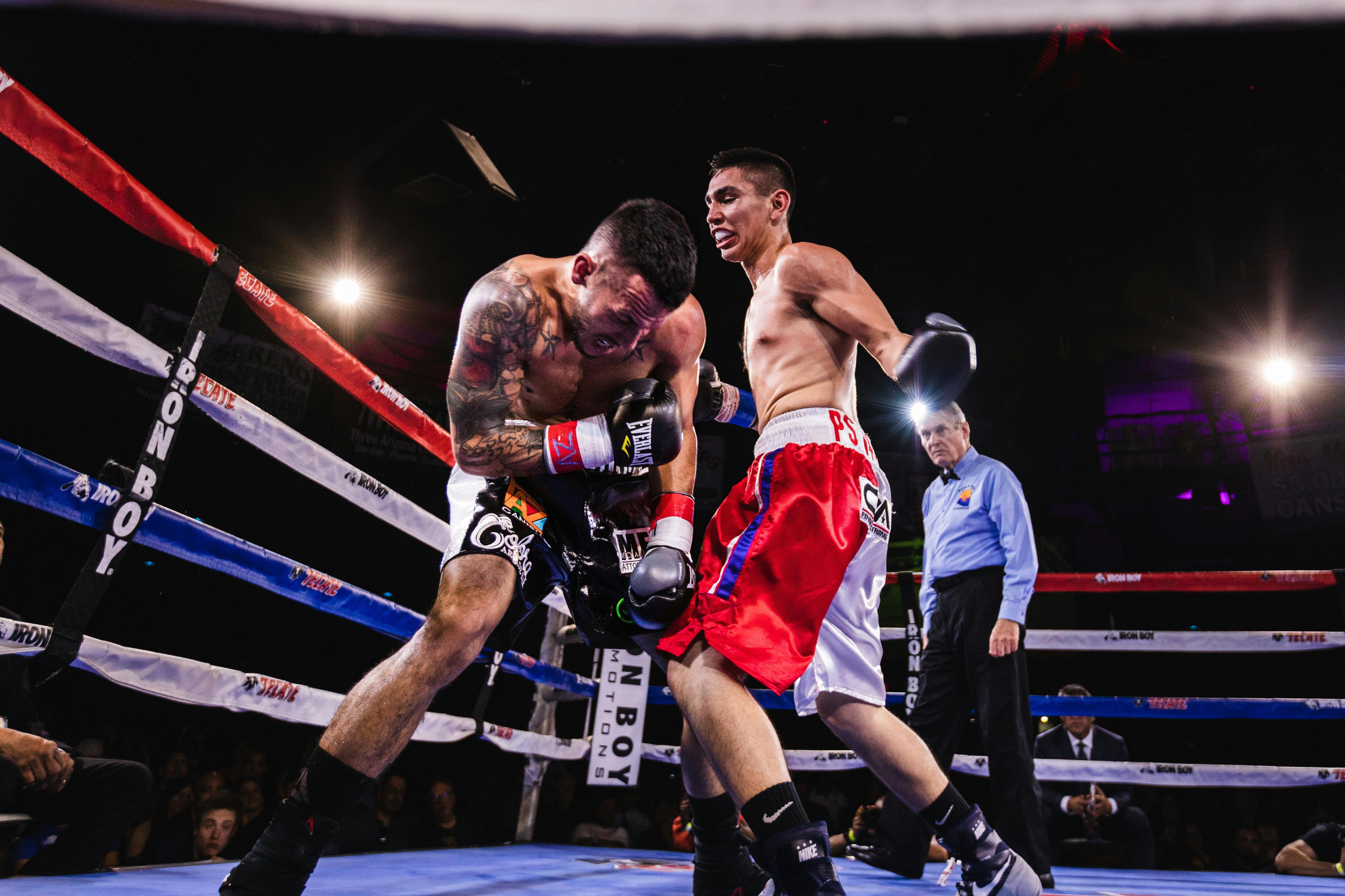
Why is Boxing a Martial Art?
I’ve always loved the debate over whether boxing is a martial art or not. Both sides have always presented strong points that made it difficult to come up with a clear conclusion. As a Boxing enthusiast, I like us to look at Boxing as a martial art in detail.
So, is boxing a martial art? According to me, Boxing can be well thought out as a martial art because it meets the four criteria required for a fighting style to be termed as a martial art. Therefore, Boxing can be placed in the same group as karate, taekwondo, kung fu, and other more “traditional” martial arts.
What is Boxing?
Boxing is a combat sport that involves two contestants, commonly referred to as boxers or fighters, engaging in a contest of physical prowess, strategy, and skills within a square roped-off ring. The objective of boxing is to score points by landing punches on your opponent while avoiding being hit. A professional Boxing match is typically divided into 12 rounds; however, these can be ended faster by a knockout (KO) or a technical knockout (TKO). The outcome of the match can be determined by various means, including knockout, technical knockout, decision by judges, or a draw.
Boxers use a variety of punches, including jabs, hooks, crosses, and uppercuts, each executed with specific techniques and strategies. The effectiveness of these punches is influenced by factors such as accuracy, speed, and power. In addition to delivering punches, boxers must use defensive maneuvers to avoid being hit. These defensive techniques include blocking, parrying, slipping, and using footwork to evade the opponent's punches.
Boxing is not only a competitive sport but also a form of self-defense, and the skills acquired in boxing can be applicable in real-world situations. While it may not involve elements like kicks or grappling found in some martial arts, boxing is widely recognized as a martial art due to its focus on controlled strategy, combat, and disciplined training.
What is a Martial Art?
A martial art is a holistic system that combines physical training, mental discipline, and often philosophical principles to develop well-rounded individuals capable of effective self-defense and personal growth. The diversity within martial arts reflects the wide range of human cultures and experiences from which these traditions have emerged. Some well-known examples of martial arts include karate, judo, taekwondo, kung fu, Brazilian jiu-jitsu, Muay Thai, and many others. Each martial art has its unique characteristics and may specialize in certain aspects of combat.
Martial arts involve various physical and mental exercises for combat and self-defense. The term "martial" is derived from "Mars," the Roman god of war, highlighting the association with military training. Martial arts encompass a wide range of traditional and modern practices, each with its cultural background, techniques, and philosophies.
Characteristics of Martial Arts
We have four distinct characteristics that differentiate Martial arts from other forms of fighting.
- One is the word “martial.” According to the Merriam-Webster dictionary “martial” is “of, relating to, or suited for war or a warrior.” Now, a fighting style has to be used in a warlike setting for it to be considered a martial art. In Boxing, there is self-defense and law enforcement.
- A martial art should have a codified system of combat practices. This means that the techniques and fighting style should be able to be written down and explained systematically. If not, then it is not a martial art. You can buy a book and read some of these skills. Note that for you to be good you need a trainer and many hours for you to be good.
- A martial art should empower the practitioner’s spiritual and mental development. A fighting style cannot be referred to as a martial art if it does help the practitioner develop a sense of spiritual fulfillment and mental fortitude while learning the fighting style.
- A martial art preserves culture or heritage. A martial art needs to have a historical tradition behind it.
Is Boxing Martial Arts?
Yes. Boxing, a venerable and dynamic combat sport, has been one of the oldest and most celebrated martial arts in history. It has been seen as a testament to the artistry and precision that define martial disciplines. While it may not adhere to the classical images of traditional martial arts, boxing earns its place among them through a convergence of strikingly effective techniques, strategic brilliance, and a profound emphasis on disciplined training. In the squared ring, where warriors engage in a dance of power and finesse, boxing transcends its status as a mere sport, evolving into a martial art with a unique identity and a rich tapestry of historical and cultural significance.
At its core, boxing embodies the art of striking, a fundamental aspect shared with many martial traditions. The pugilistic journey unfolds through the controlled mastery of punches like the jab, cross, hook, and uppercut. Each movement is a brushstroke on the canvas of combat, finely tuned to maximize power, speed, and accuracy. Just as a martial artist hones their kicks, blocks, and strikes, a boxer crafts their punches into a formidable arsenal, transforming the ring into a battleground of controlled force.
The essence of boxing extends beyond the physical realm, delving into the intricacies of mental fortitude and strategic acumen. Within the ring's confines, boxers engage in a psychological chess match, where anticipating an opponent's moves becomes as crucial as delivering one's own. This strategic dimension echoes the philosophies of martial arts, where the disciplined mind is as vital as the trained body. In boxing, the ability to read an opponent's intentions, adapt to changing circumstances, and execute well-devised tactics adds layers of complexity to the sport, elevating it to the echelons of martial prowess.
Discipline, a cornerstone of martial arts, finds a harmonious resonance within the world of boxing. The rigorous training regimen endured by boxers is a crucible that forges not only physical prowess but also mental resilience. Endless hours are dedicated to honing footwork, perfecting defensive maneuvers, and cultivating the cardiovascular endurance required for the relentless pace of a boxing match. The commitment to this disciplined path not only shapes athletes into formidable fighters but also instills values of perseverance, respect, and sportsmanship—values synonymous with the ethos of martial arts.
Historically and culturally, boxing has woven itself into the fabric of societies worldwide, standing shoulder to shoulder with traditional martial arts. The sport's roots trace back through centuries, transcending geographical boundaries and cultural differences. From the ancient Olympic Games to the storied narratives of legendary boxing champions, the sport has etched its mark on the collective human consciousness. This historical continuum not only lends boxing an aura of timelessness but also underscores its status as a martial art deeply embedded in the human experience.
In essence, boxing, with its fusion of striking techniques, strategic brilliance, disciplined training, and rich historical tapestry, emerges not just as a sport but as a martial art—one that embraces the profound intricacies of combat, the relentless pursuit of excellence, and the indomitable spirit that defines martial traditions across the ages. The boxing ring, a stage where warriors ply their craft, becomes a canvas for the art of controlled violence, where each jab and weave tells a story of skill, strategy, and the enduring legacy of boxing as a true martial art.
Why Boxing is not a martial art
While we have looked at some of the reasons why Boxing is a martial art, some people say that boxing is not a martial art. Let's look at some of these reasons why Boxing is not a martial art.
1. Boxing is not really “martial”
One reason why Boxing is not a martial art is that it has a couple of rules for it to be considered “martial”. In a Boxing fight, there are a couple of rules that might not hold during a life-and-death situation. These rules of how boxers should fight include; must wear gloves, no takedowns, no kicking, no headbutts, biting, and only punch above the waist.
2. Boxing is a friendly competition
Some people have issues with Boxing's classification as a martial art because of its purpose. Boxing is always aimed at friendly competition. The argument is that if you are interest is in warzone combat or self-defense, then you are not supposed to learn Boxing. All those who train how to box expect to fight in a controlled fight. This kind of focus does not blend well with the “martial” part of martial arts.
3. Boxing is not spiritual enough
According to Merriam-Webster “spiritual” is “of or relating to sacred matters.” This is not the case in Boxing since there are no “sacred matters”.
The main purpose of boxing is to knock out your competitor while avoiding being knocked out. If you look at Boxing from a spiritual perspective, then boxing is not a martial art since there is no spiritual intention in it.
Summary
While distinct from traditional martial arts in some aspects, boxing's emphasis on striking, defensive skills, and the cultivation of virtues like discipline and sportsmanship aligns it with the broader martial ethos. Beyond the confines of a sports arena, boxing becomes a canvas for the art of controlled violence, telling a compelling story of skill, resilience, and the enduring legacy of boxing as a true martial art.






